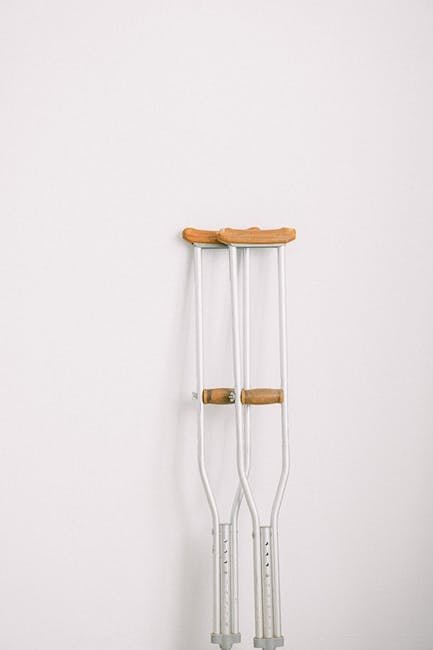When the unexpected strikes and you find yourself in an emergency situation on water, having a reliable flotation device can be the difference between life and death. Whether you are a novice swimmer, an experienced sailor, or an adventurous kayaker, choosing the right emergency flotation device is crucial. With countless options flooding the market, it’s easy to feel overwhelmed. Fear not, for we have curated a comprehensive guide to help you navigate through the sea of choices and find the best emergency flotation device that suits your needs. From life jackets to rescue tubes, we will explore the top-notch options available, equipping you with the knowledge to make a safe and informed decision. So, grab your life vest and join us as we dive into the world of the best emergency flotation devices.
Table of Contents
- Comparing Emergency Flotation Devices: Which One Is Right for You?
- Understanding the Key Features and Technologies of Emergency Flotation Devices
- Choosing the Best Emergency Flotation Device for Different Environments
- Top Recommendations: Emergency Flotation Devices for Various Water Activities
- Additional Considerations: Maintenance, Certification, and Storage of Emergency Flotation Devices
- Q&A
- The Way Forward

Comparing Emergency Flotation Devices: Which One Is Right for You?
When it comes to emergency situations in water, having the right flotation device can make all the difference. But with so many options available, how do you choose the one that suits your needs? Let’s take a look at three popular emergency flotation devices and compare their features:
- Life Jackets: Life jackets, also known as personal flotation devices (PFDs), are a classic choice for boating and water activities. They come in different types, including Type I, II, III, and IV, each offering varying degrees of buoyancy and suitability for different types of water activities. Life jackets are inherently buoyant and provide flotation without any additional action required from the wearer. They are often designed to keep the wearer face-up in the water, allowing them to breathe more easily.
- Inflatable Life Vests: Inflatable life vests are a compact and lightweight alternative to traditional life jackets. These vests feature a CO2 cartridge that inflates the vest when activated, providing buoyancy. They are ideal for activities where freedom of movement is important, such as kayaking or paddleboarding. Inflatable life vests are less bulkier than life jackets when deflated, making them easier to wear and transport. However, they require regular maintenance to check and replace the CO2 cartridge and ensure proper inflation.
- Throwable Flotation Devices: Throwable flotation devices are essential for watercrafts or areas where people may need to be rescued from the water. Typically, these devices come in the form of rings, cushions, or horseshoe-shaped buoys and are meant to be thrown to a person in distress. They provide temporary buoyancy until further help arrives. Throwable flotation devices are simple to use and don’t require the user to wear or maintain them. They are suitable for situations where immediate assistance can be reached or when additional flotation is needed alongside a life jacket.

Understanding the Key Features and Technologies of Emergency Flotation Devices
Emergency flotation devices are crucial lifesaving equipment that can make all the difference in the event of an emergency at sea or on water surfaces. In order to fully grasp their importance, it is essential to understand the key features and technologies that enable these devices to provide effective flotation and ensure the safety of individuals in distress.
Key features of emergency flotation devices include:
– Buoyancy: The primary purpose of these devices is to provide buoyancy to keep individuals afloat in water. This is achieved through the use of buoyant materials such as foam or inflatable chambers.
– Visibility: Many emergency flotation devices come equipped with highly visible colors or reflective materials to enhance visibility and aid in search and rescue operations.
– Ergonomics: Manufacturers diligently design these devices with adjustable straps and comfortable fittings to ensure a secure and snug fit on the wearer’s body.
To enhance the functionality and efficiency of emergency flotation devices, various advanced technologies are employed, such as:
– Inflatable chambers: These devices are equipped with chambers that can be manually or automatically inflated to provide additional buoyancy when needed.
– GPS tracking: Some modern devices incorporate GPS technology, enabling rescuers to quickly locate individuals in distress.
- Whistle or signaling devices: To attract attention and indicate distress, many devices are equipped with built-in whistles or signaling devices.
Understanding these key features and technologies will undoubtedly aid in making informed choices when it comes to selecting emergency flotation devices, ensuring that such equipment is not only reliable but is also suited for the specific needs and situations at hand. Remember, preparation and understanding can be the key to survival in emergency situations. Stay safe, stay afloat.
Choosing the Best Emergency Flotation Device for Different Environments
When it comes to safety in various environments, having the right emergency flotation device can be a life-saving decision. Here are some factors to consider when choosing the best option for different scenarios:
1. Coastal Waters:
For those venturing near coastlines, where the unpredictability of ocean currents and tides may come into play, a reliable inflatable life jacket is essential. Look for features like:
- Automatic inflation upon immersion in water
- Integrated whistle for signaling
- High visibility colors for easy identification
2. Lakes and Rivers:
When exploring calm inland waters, such as serene lakes or gentle rivers, a personal flotation device (PFD) with ample buoyancy is recommended. Consider the following:
- Adjustable buckles and straps for a snug fit
- Reflective patches for improved visibility during low-light conditions
- Mesh panels for breathability and comfort
3. Open Water and Deep Seas:
If you find yourself navigating vast expanses of open water or embarking on deep-sea adventures, a fully loaded, all-weather immersion suit is a wise choice. Look for attributes like:
- Waterproof and insulated materials for cold-water protection
- Reflective tape and light attachments for enhanced visibility
- Integrated harness and strong zippers for secure fit and ease of donning
Remember, selecting the appropriate emergency flotation device depends on your specific environment. Prioritize comfort, durability, and most importantly, the level of safety it can offer in case of an emergency. Stay safe and enjoy your water adventures!

Top Recommendations: Emergency Flotation Devices for Various Water Activities
When it comes to engaging in water activities, safety should always be a top priority. To ensure your safety, it’s crucial to have the right emergency flotation device on hand. Here are some top recommendations for different water activities:
1. Swimming in Open Waters:
For swimmers venturing into open waters such as lakes or the ocean, a reliable and comfortable life jacket is essential. Look for a Coast Guard-approved jacket with adjustable straps, ensuring a snug fit. Opt for models with high buoyancy ratings to maintain maximum flotation in case of emergency. Remember, safety should never be compromised, so always wear a life jacket even if you’re a strong swimmer.
2. Kayaking and Canoeing:
Kayaking and canoeing offer thrilling experiences, but accidents can happen. A personal flotation device (PFD) specially designed for paddling activities is your best bet. These PFDs are typically more compact, allowing for freedom of movement, and often come equipped with additional features like pockets for storing small essentials, ensuring you stay safe and prepared.
3. Jet Skiing or Motorized Water Sports:
When it comes to high-speed water activities, such as jet skiing or motorized water sports, a life vest specifically designed for these adrenaline-pumping adventures is crucial. These vests often provide increased impact protection and enhanced buoyancy to handle the demands of fast-moving water adventures, ensuring you can enjoy your thrilling ride with confidence.
Additional Considerations: Maintenance, Certification, and Storage of Emergency Flotation Devices
When it comes to emergency flotation devices, there are a few additional considerations that you need to keep in mind. Proper maintenance is crucial to ensure the effectiveness of these devices when they are needed the most. Regular inspection and servicing should be carried out according to the manufacturer’s guidelines.
Additionally, certification plays a vital role in ensuring the quality and reliability of emergency flotation devices. Look for certifications such as the FAA (Federal Aviation Administration) approval or ISO (International Organization for Standardization) certification to ensure that the device meets the necessary safety standards.
Storage of these devices is also an important aspect to consider. Always store emergency flotation devices in a cool, dry place away from direct sunlight and extreme temperatures. Furthermore, make sure that they are easily accessible and clearly marked in case of an emergency situation.
- Regular inspection and servicing is essential for maintenance
- Look for certifications like FAA and ISO
- Store in a cool, dry place away from direct sunlight and extreme temperatures
- Easily accessible and clearly marked for emergency situations
Q&A
What are emergency flotation devices?
Emergency flotation devices are devices designed to keep individuals afloat in the water during emergency situations. They come in various forms such as jackets, vests, and rafts, providing buoyancy and ensuring safety in water-related emergencies.
How do I choose the right emergency flotation device?
When selecting an emergency flotation device, consider factors such as the intended use, the size and weight of the individual, the device’s buoyancy rating, and any additional features like reflective strips or whistles. It is also crucial to ensure that the device meets safety standards and is approved by relevant authorities.
Which emergency flotation devices are suitable for children?
For children, it is essential to choose appropriately sized flotation devices, ensuring a secure fit and unrestricted movement. Some popular options for children include life jackets with adjustable straps and grab handles, providing both buoyancy and added safety features.
What are the different types of emergency flotation devices available?
The most common types of emergency flotation devices include life jackets, life vests, buoyancy aids, and inflatable rafts. Life jackets offer the highest level of buoyancy, while life vests provide a balance between buoyancy and comfort. Buoyancy aids are more suitable for competent swimmers, and inflatable rafts are designed for groups or individuals during open-water emergencies.
Are inflatable emergency flotation devices safe to use?
Yes, inflatable emergency flotation devices are safe, but it is crucial to ensure they are of high quality and properly maintained. Regular inspections and proper inflation, as well as understanding their use and limitations, are essential for safety. Inflatable devices often provide excellent buoyancy while being more compact and comfortable compared to traditional life jackets.
What additional features should I consider in an emergency flotation device?
Some additional features to consider in an emergency flotation device include reflective strips for increased visibility, integrated whistles or signaling devices, and pockets for carrying essential items. These features can enhance safety and increase the chances of rescue in emergency situations.
How often should emergency flotation devices be inspected?
It is recommended to inspect emergency flotation devices at least once a year, or more frequently if they are subjected to heavy use or harsh conditions. Check for any signs of wear, tear, or damage, ensure proper inflation, and confirm that all features are functioning correctly. Regular inspections are crucial to ensure the device’s reliability and effectiveness.
Can I reuse an emergency flotation device after a previous emergency situation?
While some emergency flotation devices can be reused, it is important to carefully inspect and assess their condition after each use. Examine them for any signs of damage or wear and ensure they are still in proper working order. If there are any doubts regarding their functionality or safety, it is advisable to replace them.
The Way Forward
Whether you’re sailing the vast oceans, spending relaxing days at the beach, or simply exploring by the poolside, ensuring your safety is paramount. That’s why we’ve taken you on a comprehensive journey through the world of emergency flotation devices. From life jackets to life rafts, we’ve explored every nook and cranny of the market, providing you with a wealth of knowledge to make well-informed decisions.
While it may be tempting to overlook the importance of these devices, we hope our guide has reminded you of their significance. The peace of mind they offer is immeasurable, for science and unpredictability do not always go hand in hand. Preparedness is the key, dear reader, for emergencies can occur when we least expect them.
Remember, these devices are not just accessories; they are lifelines, designed to keep us afloat when all else fails. They bridge the gap between danger and rescue, offering a lifeline that could be the only thing standing between you and safety.
As you set sail to explore new horizons or embark on beach adventures with loved ones, take a moment to ponder the importance of emergency flotation devices. Each device comes with its own unique features, designed with your safety in mind. We hope that our guide has equipped you with the necessary knowledge to choose the perfect flotation companion, tailored to your needs.
So, dear reader, as you bask in the serenity of the water’s edge or embark on daring maritime expeditions, remember the importance of these unsung heroes. Stay safe, stay prepared, and enjoy every watery venture with the reassurance that you have chosen the best emergency flotation device.
Don’t let uncertainty weigh you down; let the waves be your playground of joy and exploration. May the tranquil embrace of water always bring you solace, knowing that you have the ultimate companion to keep you afloat in times of distress.
Until we sail together again, dear reader, may your adventures be filled with serenity, exploration, and unyielding safety.
As an affiliate, my content may feature links to products I personally use and recommend. By taking action, like subscribing or making a purchase, you’ll be supporting my work and fueling my taco cravings at the same time. Win-win, right?
Want to read more? Check out our Affiliate Disclosure page.